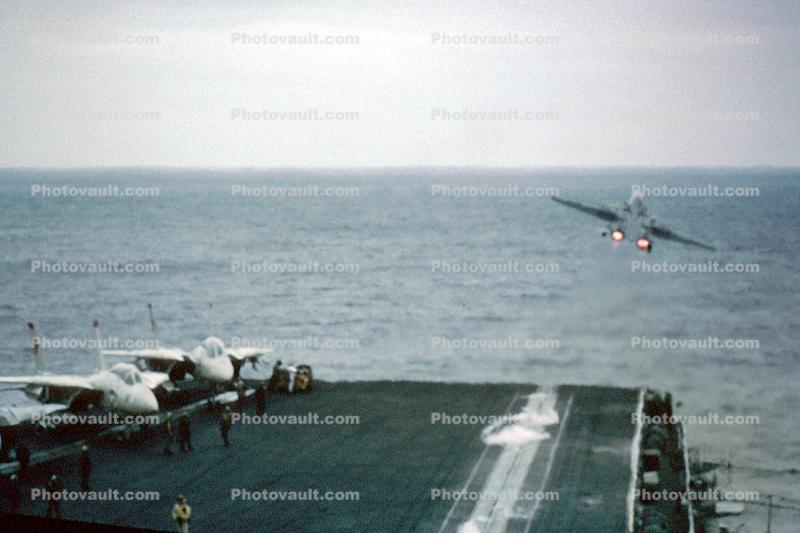
Although the attempt largely failed due to contrary winds which drove the balloons back over the ship, one bomb did land on the city. A number of small Montgolfiere hot air ballons were launched with the intention of dropping bombs on Venice.

Just over 40 years later on 12 July 1849, the Austrian Navy ship SMS Vulcano was used for launching incendiary balloons. The proclamations against Napoleon Bonaparte, written in French, were attached to kites, and the kite strings were set alight when the strings had burned through, the leaflets landed on French soil. The earliest recorded instance of using a ship for airborne operations occurred in 1806, when Lord Cochrane of the Royal Navy launched kites from the 32-gun frigate HMS Pallas in order to drop propaganda leaflets. Samuel Langley's experiment flying the Langley Aerodrome off a houseboat in 1903 failed with it plunging into the Potomac River. Although the light carriers usually carried the same size air groups as escort carriers, they had the advantage of higher speed as they had been converted from cruisers under construction.Įarly history - balloon and seaplane carriers Subsequent light aircraft carriers, such as USS Independence, represented a larger, more "militarized" version of the escort carrier concept. The USA built small escort carriers, such as USS Bogue, as a stop-gap measure to provide air support for convoys and amphibious invasions. World War II saw the first large-scale use of aircraft carriers and induced further refinement of their launch and recovery cycle leading to several design variants. During the Second World War, these ships would become the backbone of the carrier forces of the US, British, and Japanese navies, known as fleet carriers. This allowed the design to be specialized to their future role, and resulted in superior ships. During the 1920s, several navies started ordering and building aircraft carriers that were specifically designed as such. Most early aircraft carriers were conversions of ships that were laid down (or had even served) as different ship types: cargo ships, cruisers, battlecruisers, or battleships. This evolution was well underway by the early to mid-1920s, resulting in the commissioning of ships such as Hōshō (1922), HMS Hermes (1924), Béarn (1927), and the Lexington-class aircraft carriers (1927). The development of flat top vessels produced the first large fleet ships. Seaplanes and seaplane tender support ships, such as HMS Engadine, followed. The advent of fixed-wing aircraft in 1903 was followed in 1910 by the first flight from the deck of a US Navy cruiser.


Since their introduction they have allowed naval forces to project air power great distances without having to depend on local bases for staging aircraft operations.īalloon carriers were the first ships to deploy manned aircraft, used during the 19th and early 20th century, mainly for observation purposes. Flight deck of HMS Formidable with battleship HMS Warspite in background (right), operations off Madagascar, April 1942Īircraft carriers are warships that evolved from balloon-carrying wooden vessels into nuclear-powered vessels carrying scores of fixed- and rotary-wing aircraft.


 0 kommentar(er)
0 kommentar(er)
